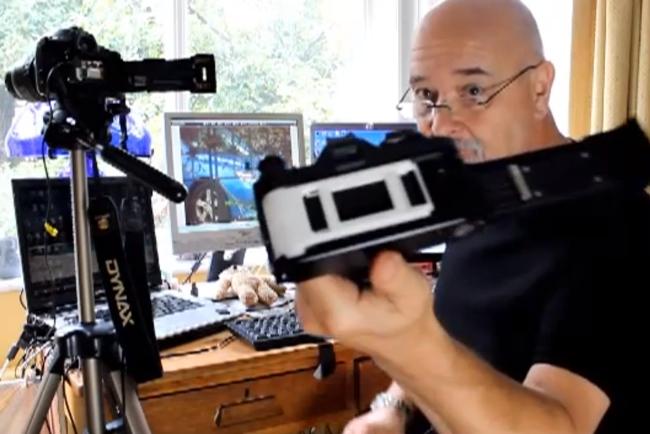
We’ve seen a few analog-meets-digital photography concepts looking for folks to back the projects via crowdfunding sites, but the DigiPod on Indiegogo might be the most intriguing yet, especially for owners of film SLRs. As you probably guessed it, the DigiPod is a device that turns an analog film SLR into a digital camera.
The DigiPod fits neatly into the cavity of a SLR where a roll of film normally goes. Because 35mm film is fairly standard, it’d fit inside almost any brand of camera. Operating it couldn’t be any easier: Just press the shutter and “advance the film” as you normally would (of course, you’re not actually advancing anything, but it’s just to tell the camera you’re ready to take the next shot). The DigiPod will use a 2/3-inch CMOS sensor, which is sort of like putting a point-and-shoot inside your SLR, if it reaches it funding goal of £199,000 (approximately $310,000). But if the campaign gets a lot of support and exceeds the goal of a thousand backers, the sensor size could increase to 1 inch (2,000 backers) or 4/3 inch (5,000 backers).

The device was created by James Jackson, a British developer and former photographer who has spent the past five years developing the DigiPod. “I have for years been looking at a number of old analog SLR camera bodies that I used as a young professional, all of which are precision mechanical instruments, they all hold great memories, and have taken some great images,” Jackson writes in his Indiegogo page. “I wanted the Digipod to be as versatile as possible in the space available, so there is no hard memory, everything is saved to a micro sd card, plus it has a mini USB for direct connection to a computer and a built in battery.”
Jackson isn’t the first to try. He cites a similar attempt in 2000 by a company called Silicon, but failed because of technical problems. Jackson researched what went wrong at Silicon and found that they were making a product that was too big and too expensive. It was perhaps too early for its time. The DigiPod is able to fit inside most SLRs because technology has advanced since Silicon’s product. Jackson has tried it with a variety of camera systems, and the sample images here were taken with a Minolta 35mm SLR with an autofocusing 35-70mm lens.

If successful, Jackson hopes to sell the device for $370 at retail (unless you’re an early supporter). Although there’s still approximately 30 days left in the campaign, Jackson has raised less than £10,000. Even though it’s expensive and you can get a new digital camera for the price, we hope Jackson succeeds and is able to put a working production unit on the market. There’s clearly an audience for vintage film cameras, as evidenced by the hipsters and popularity of Lomography, but the ones to truly benefit will be those who still own a Canon AE-1 or Leica they’d like to take out (minus the need to bring film with them).
Watch the video where Jackson explains more about his prototype.


